By Charles Platt and Mike Darwin
Cryo-Span, Corporation
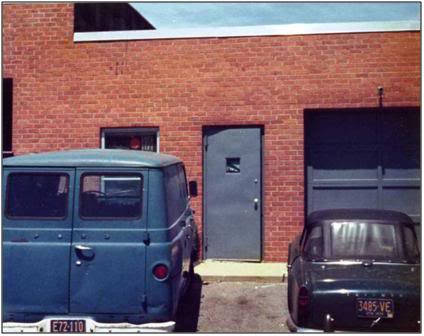
“Late in 1967 these two young hippies showed up, Paul Segall and Harry (Frosty) Waitz. Paul was a biology student at Stony Brook and he was hell bent on making aging research and cryonics into big time scientific undertakings. It was a crazy time, the 60’s, the Vietnam War, the protests.
Entrance to the Cryo-Span facility, Unit C, at 171 Eads Street, West Babylon, NY, July, 1972. Photo by Mike Darwin.
Paul and Harry would go handing out cryonics literature at funerals, wearing their long hair and beads. This didn’t go over too well with the cemetery management at Washington Memorial Park. Cryonics was a constant media attraction; camera crews and journalist were always coming round and reporters would enquire about cryonics at the cemetery offices. It was a terrible hassle for them. Campbell, the cemetery director had left, and another person came in. They wanted more rent, but basically they wanted us out of there. We were a lot of trouble for them and the constant media presence wasn’t conducive to the nice, quiet, ‘final resting place’ they were selling to the dearly beloved. And we weren’t happy there, because we were keeping bodies in the garage, and the people who worked on the grounds were always joking about the frozen bodies and leaving their lunch on the dry-ice boxes.
Another thing that was a real problem was that there was no way for us to lock the door. The groundskeepers used the room where the bodies were stored as a lunch room and they would throw their cigarette butts on the floor. This used to enrage Nick DeBlasio. He said it was disrespectful, and it was. However, there was nothing we could do about it. The facility was used to store grounds keeping equipment and supplies for the cemetery, and that was just the way it was. If you’re going to do this, you’ve really got to have your own place, so you can control the situation, so people aren’t always coming in, and so family can visit and you can be sure that the place will be clean and orderly.”

Aerial view of 171 Eads Street, Unit C, in West Babylon, New York where the Cryo-Span facility was once located. The landfill is still active (2008) and cemeteries still surround the small industrial park. The red balloons mark the location of the Cryo-Span bay. Photos by Google Earth.
“There was a group of CSNY members that wanted to find another facility. They were unhappy about the way I was doing things. They found a church in Suffolk County, and bought it. Thought they could store cryonics patients legally in a cemetery. They decided they would dig under the church and build a facility. They didn’t tell the people who were using the church every Sunday. DeBlasio went down to Brookhaven Town Hall and asked for a building permit to store bodies. They turned him down, so he went ahead without it. Halloween night, the local citizens all gathered around this church with torches. That was the end of their operation which, ironically, they called ‘Cryo-Crypt.’ After that, we used to have meetings in the church once a month. Time went on, and finally they weren’t making the mortgage payments, so Fred Horn called me and we met at a diner somewhere. He said he would take over the payments. I didn’t have any money. Eventually Fred Horn sold it to Suffolk County and they made it into Cathedral Pines Park.”
“So, we had a parting of the ways. Nick Deblasio, John Bull, Mrs. Mandel, they split off from CSNY and formed their own organization, Cryonics International. DeBlasio came and got his wife and carted her off to a hole in the ground Nelson and he had dug in a cemetery in Butler, New Jersey. Nelson showed up at Washington Memorial Park, crated up Steven Mandel in our tank, and took him off to his other hole in the ground in a cemetery in Chatsworth, California. I packed up our remaining patient, Hurst, and we rented this industrial bay in West Babylon; 171 Eads Street, unit C. We sublet most of the space to the business next door and just occupied the front; we had the small office and some of the open space behind it and the roll up door. It wasn’t much, but it was ours, and we could control what went on there, and who came and who went.”
“I think one of the reasons the place came so cheap was that it was located right in the middle of a bunch of cemeteries with a landfill just a street or two over. The landfill was this gigantic heap of garbage several stories tall. It was a skyscraper of garbage with thousands of gulls constantly circling around it. In the summer, well, let’s just say the aroma coming off it wasn’t Chanel Number 5. “
The First CSNY Freezing: Steven Mandel
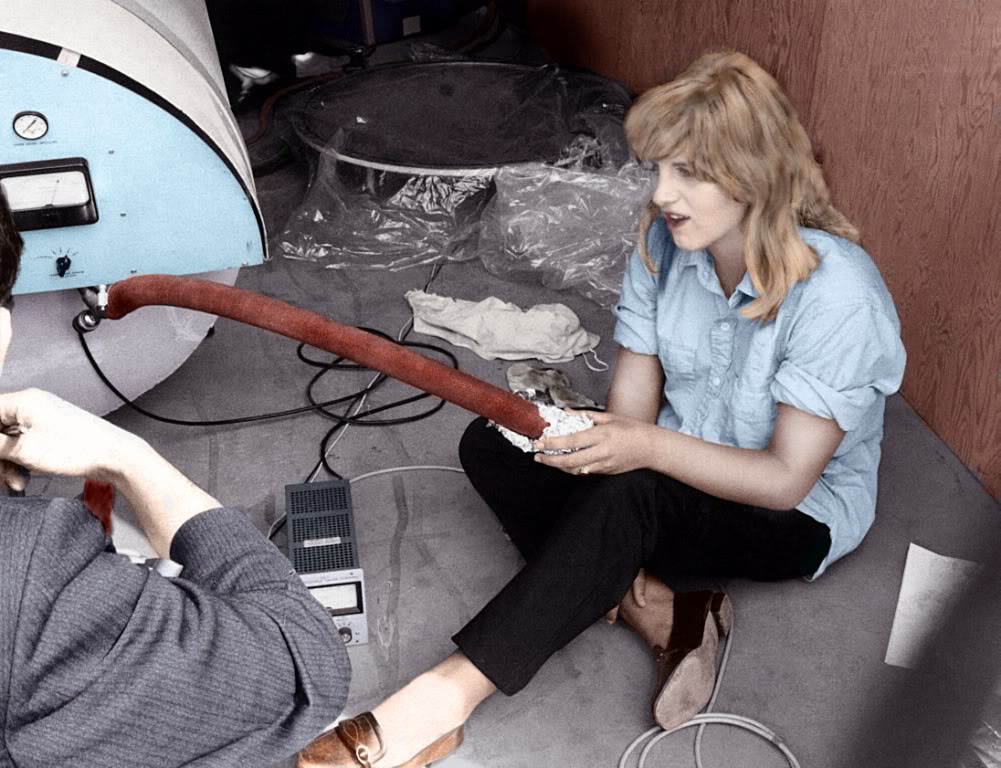
Diane Pummel Henderson (R) during the encapsulation of Steven J. Mandel in 1968. Photo by Curtis Henderson. Diane is impregnating the natural rubber vacuum hose with silicone vacuum grease to decrease its gas permeability. Red rubber hosing for this this application has now largely been replaced by specialized formulations of plastic tubing.
“My second wife, Diane, was seventeen when I got mixed up with her. She ran away from home. Her father sent the police out looking for her, so she couldn’t stay here. She stayed with Paul Segall in Lindenhurst. Segall and his crew, he called them the Chinese Army, they got a $200,000 grant for an alternative life style. I don’t know how much of an alternative it was. I took Ettinger there on one of his visits. The place was just wall-to-wall mattresses with half naked young women lying around. I mean, there it was, he was looking at a scene right out of his book (Man Into Superman); “…acres and acres of bare boobies and behinds,” and he just cried; his eyes filled up with tears and we had to get him out of there. Anyway, I first met Diane where she worked, at her father’s gas station. I had to wait till she was 18 before we could get married – just a few weeks.”
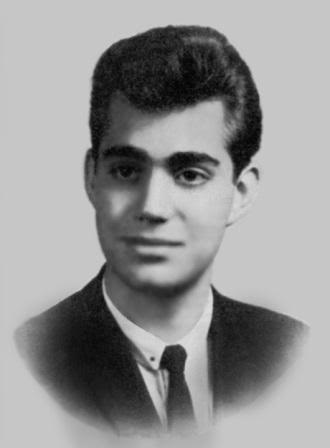 Steven Jay Mandel, a 24 year old New YorkUniversity aeronautical engineering student, was the first CSNY patient; cryopreserved on 28 July, 1968.
Steven Jay Mandel, a 24 year old New YorkUniversity aeronautical engineering student, was the first CSNY patient; cryopreserved on 28 July, 1968.
“We were having this big party over at Paul Segall’s, it was early in the morning on a Sunday morning, and the phone rang, I remember getting up off the floor. It was Stephen Mandel’s aunt (Rose Leslie) calling, he had just died, and she said do you intend to freeze him? So I went over to Fred’s, there was a lot of excitement, and he said go ahead, we’ll do it. The perfusion was done with a Porti Boy embalming pump. A big glass dome, looks like a big juicer. We didn’t have any money, but Fred said he would cover the initial expenses. He got the body in his station wagon from the hospital. He knew people there, picked up bodies all the time. He brought Mandel back, and someone told the newspapers, so we got reporters. Fred and Paul perfused him with glycerol. His mother said he had an insurance policy, but later the insurance company reneged, saying he had some kind of intestinal disease. Actually I think he died of a hospital screw up.[1] After he was perfused at the funeral parlor, we put him in a body bag with ice and rock salt for a few hours, and then Fred, Segall and some others moved him into the temporary storage box and covered him over with dry ice. He stayed at Fred’s for awhile until we were able to lease the space at Washington Memorial Park cemetery. Then we moved Steven and the tank out to Washington Memorial Park.”
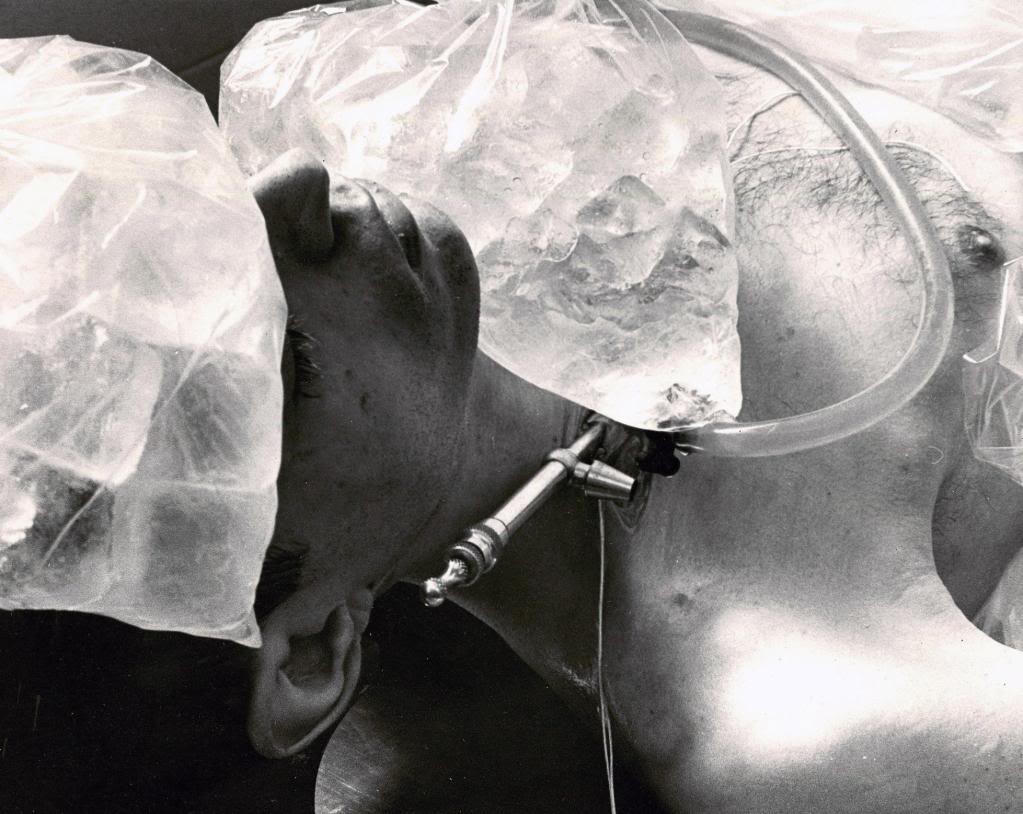
Steven Mandel during cryoprotective perfusion on 28 July, 1968. The rod-like silver tool projecting from the neck wound is a mortuary ‘vein drain:’ a device equipped with a plunger, supposedly to snare and remove clots. It is ineffective at doing at this, and in fact is a serious obstruction to venous return. It was abandoned (by me) in cryonics after tests on animals demonstrated it to be seriously harmful, as opposed to simply useless. Photo by Karl Werner. A PDF of the issue of Cryonics Reports magazine, detailing Steven Mandel’s cryopreservation is available at: http://cryoeuro.eu:8080/download/attachments/425990/CryonicsReports3%289%291968.pdf
“We kept him out there at the cemetery in a room off the garage. What Fred did was, he held his disposition paperwork in abeyance, as if he was storing the body awaiting instructions from the family for burial and final disposition. A doctor signs the death certificate, the funeral director should then sign it and it goes back to Albany with his license number on it. Fred never took the last step, and nobody ever called him on it, and he kept the paperwork.”
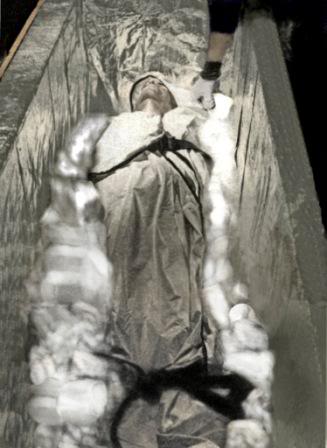
“As I said before, in these cases we were always dealing with a third party. Half a dozen people were always calling, they were sick or dying, and they always said, ‘My husband will take care of it.’ But they never did. You never heard from them.”
Steven Mandel on dry ice storage at Washington Memorial Park, Long Island, New York. Photo by Curtis Henderson.
Selected media coverage of Steven Mandel’s cryopreservation is available at: http://cryoeuro.eu:8080/pages/viewpageattachments.action?pageId=425990&highlight=Steven_Mandel_Cryopres_Media_%2C+1968.pdf#Home-attachment-Steven_Mandel_Cryopres_Media_%2C+1968.pdf
and:
http://cryoeuro.eu:8080/download/attachments/425990/CoronetJan1969.pdf

The photo above shows the inner can of the Cryocapsule prepared for receipt of the patient. The dome of the end-cap of the inner can has had a section cut from it to allow for insertion of the patient. If the photo is examined closely, the residue of the cutting oil used to lubricate the abrasive cutting wheel can be seen to have streamed down the surface of the inner can head. This oil then becomes a contaminant in the vacuum space, which will slowly vaporize under high vacuum conditions. Because the inner can will be at liquid nitrogen temperature (-196oC), or liquid nitrogen vapor temperature (~ -150oC), during operation, it becomes effectively impossible to ‘out-gas’ this oil, and thus to obtain a stable high vacuum (~2.5 x 10-6 torr). Photo by Curtis Henderson.

Steven Mandel on stretcher prior to insertion in the Cryo-Care, Cryocapsule on 05 September, 1968. Photo by Curtis Henderson. A PDF of the issue of Cryonics Reports magazine, detailing Steven Mandel’s encapsulation is available at: http://cryoeuro.eu:8080/download/attachments/425990/CryonicsReports3%2810%291968.pdf
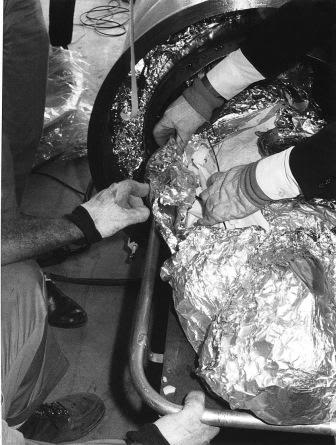
Placement of thermocouple probe to monitor temperature descent of the patient during cooling to liquid nitrogen temperature. Photo by Curtis Henderson.
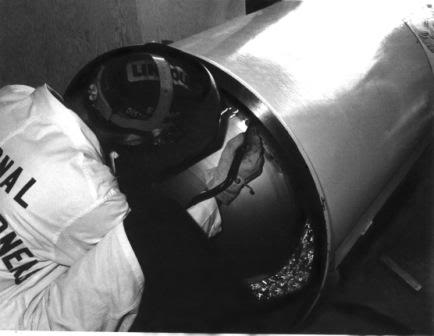 The Cryo-Care Cryocapsules were ‘sealed in the field’ units, meaning that the inner can of the dewar had to be welded shut after the patient was placed inside. This created endless problems due to condensation, cold-induced distortion of the metal, and difficulty re-approximating the cut-out radius of metal back into the end of the inner can head. The result was usually a micro-porous weld that would not hold vacuum. Photo by Curtis Henderson.
The Cryo-Care Cryocapsules were ‘sealed in the field’ units, meaning that the inner can of the dewar had to be welded shut after the patient was placed inside. This created endless problems due to condensation, cold-induced distortion of the metal, and difficulty re-approximating the cut-out radius of metal back into the end of the inner can head. The result was usually a micro-porous weld that would not hold vacuum. Photo by Curtis Henderson.
Fred Horn
“All of this was possible because of the connections that Fred had. This put us in the center of the whole cryonics thing. Nelson had frozen one person previously in California, but he was very secretive. He also froze Marie Sweet. Nelson had made the arrangements and they went looking for money to pay for it afterwards. There wasn’t any.”

Fred Horn simulates cryoprotective perfusion on Diane Henderson, for a photo used to illustrate the full-color Cryo-Span promotional brochure, which was produced in 1969. The pneumatically driven chest compressor was made (briefly) by the Westinghouse Company, and was branded as the ‘Westinghouse Iron Heart’ by its manufacturer. Photo attributed to Saul Kent. A PDF of the Cryo-Span brochure is available at: http://cryoeuro.eu:8080/download/attachments/425990/CryoSpanBrochure.pdf
“Fred Horn was a playboy. He got out of the Air Force; he’d been assembling nuclear weapons. He took the mortuary science course, he borrowed money, Long Island was booming, he built the funeral home; he had his apartment above it. Then, after we got involved with him, half the time we were practically living in his apartment. He was always getting into trouble, went through a series of divorces, a real adventurer type. There was a bar across the street, he got in a fight because the bikers would come and raise hell while he was having funerals. So he bought the bar. He also had a boat. We chopped the top off the boat and moved it into the bar. We used the deck of the boat for the top of the bar. I think it’s still there in St. James. And the funeral parlor paid for all this. The bar was called the Admiral, or something. Fred is down in Florida now, he retired some years ago and he’s got a yacht down in Ft. Lauderdale that he takes tourists and fishermen out on.”[2]
Minnesota Valley Engineering (MVE)
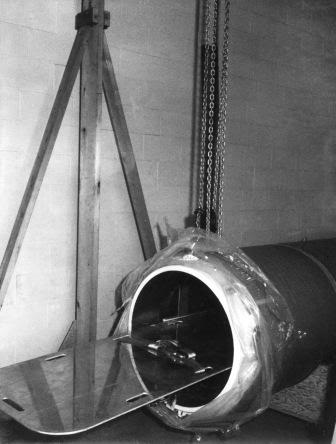 “The people (patients) who were given to us, we put them in dry ice, and then waited till the tanks came. The only tank we ever bought ourselves was the first Hope tank, which Nelson stole. DeBlasio came to us about a year later. We had been talking to Schuster, at a gin mill near the cryobiology conference in 1967; he owned a small company called Minnesota Valley Engineering.[3] He made tanks for the Minnesota Valley Breeders Association, where they froze sperm from bulls, in New Prague, Minnesota. The whole town is Czech immigrants who settled there in the late 1800s.”
“The people (patients) who were given to us, we put them in dry ice, and then waited till the tanks came. The only tank we ever bought ourselves was the first Hope tank, which Nelson stole. DeBlasio came to us about a year later. We had been talking to Schuster, at a gin mill near the cryobiology conference in 1967; he owned a small company called Minnesota Valley Engineering.[3] He made tanks for the Minnesota Valley Breeders Association, where they froze sperm from bulls, in New Prague, Minnesota. The whole town is Czech immigrants who settled there in the late 1800s.”
The first MVE dewar, 1969 (at left).
“Schuster said he was interested in building tanks, but he didn’t have the tooling to make the tank big enough. But then he purchased another company, which gave him the necessary resources.[4] Schuster purchased Hoffman Cryogenics which made the A-8000, a short version of the MVE whole body tank. Some of Shuster’s original tanks are still in use, have been in continuous operation since the ‘60s at places like 21st Century Genetics in New Prague.”
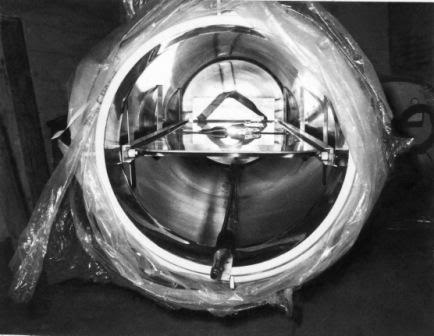 Interior of the first MVE dewar shortly after delivery. The fill tube is at the bottom, center, of the photo. After-market automobile seat-belts were used to secure the patient to the solid aluminum stretcher.
Interior of the first MVE dewar shortly after delivery. The fill tube is at the bottom, center, of the photo. After-market automobile seat-belts were used to secure the patient to the solid aluminum stretcher.
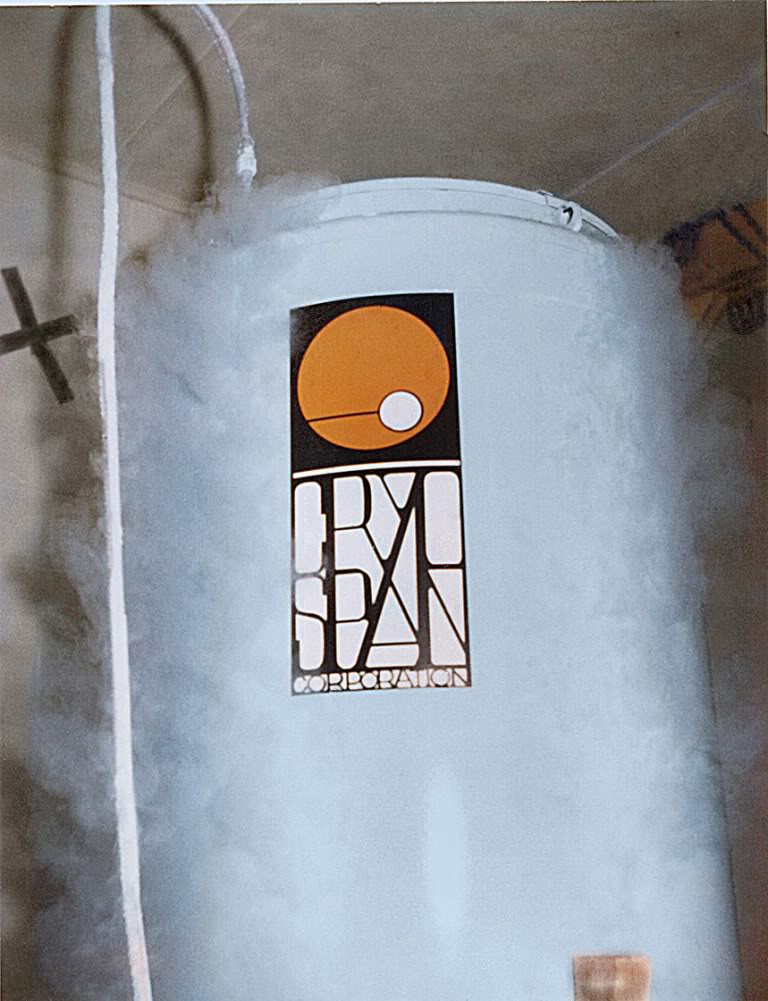
Unlike all previous human cryogenic storage units, the MVE dual patient dewars stood upright, thus avoiding the need to seal the annular space of the units under field conditions. Since the units had the same configuration as a thermos bottle, opening at the top, the vacuum space could be evacuated under factory conditions, where a ‘bake-out’ of the superinsulation, at a temperature well above 100 degrees C, was possible. This increased the out-gassing of oils and water vapor sequestered in the superinsulation blanket, and covering the interior surfaces of the inner and outer cans; contamination that occurs as a result of handling during assembly of the unit. Photo by Curtis Henderson.
“Schuster was the best prospect for a tank that worked, because the Hope tank, well, you used to have to keep the vacuum pump running all the time. The basic tank that Schuster and I designed is still the way they’re being made in cryonics, now.”
Nick and Ann DeBlasio
“Then Nick DeBlasio came along; he said he had to freeze his wife. She had died from complications from her breast cancer; something went wrong with some treatment or other. He put up something like $11,000. It was quite common for people to come to me at least a day or more after the person had died. Some of them had even been embalmed.”
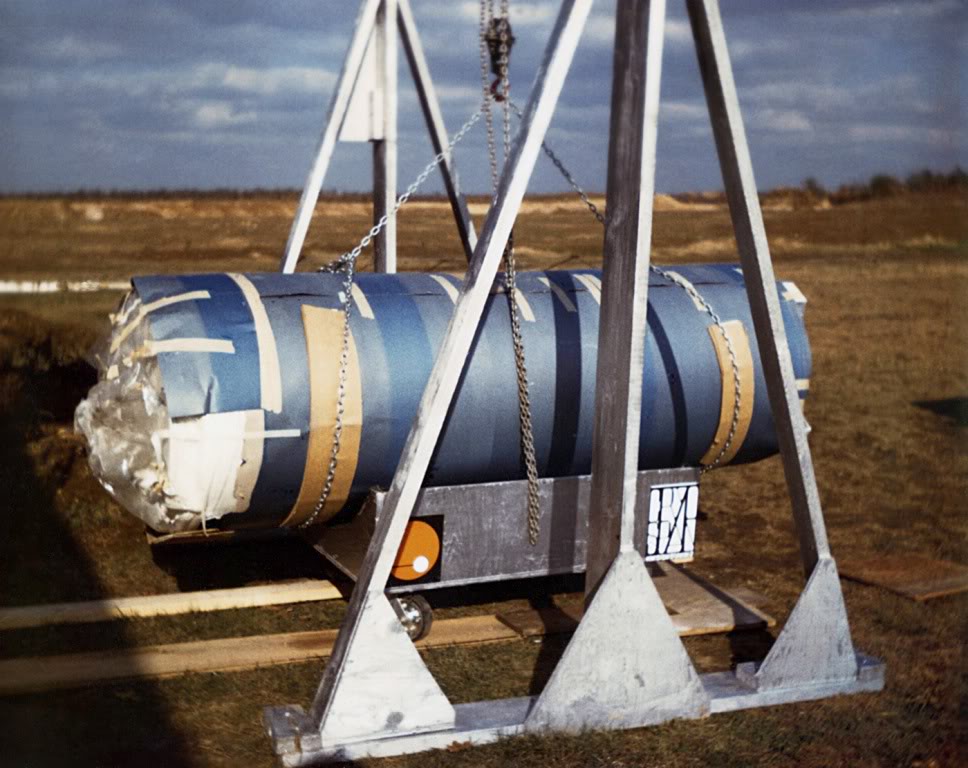 Unloading the MVE dewar that would hold Ann DeBlasio at the Washington Memorial Park Facility in Coram, Long Island, New York. Photo by Curtis Henderson.
Unloading the MVE dewar that would hold Ann DeBlasio at the Washington Memorial Park Facility in Coram, Long Island, New York. Photo by Curtis Henderson.
“DeBlasio was a retired New York City policeman, he carried a cannon, and he emphasized it by pointing it at you. He was always threatening to shoot people. We had an appointment to meet him at a diner up on Route 306. His wife was in North Shore Hospital. He said he would give us $11,000 cash. The tank was going to cost about $5,000. He absolutely believed his wife would come back. He also sued the hospital – and won.”
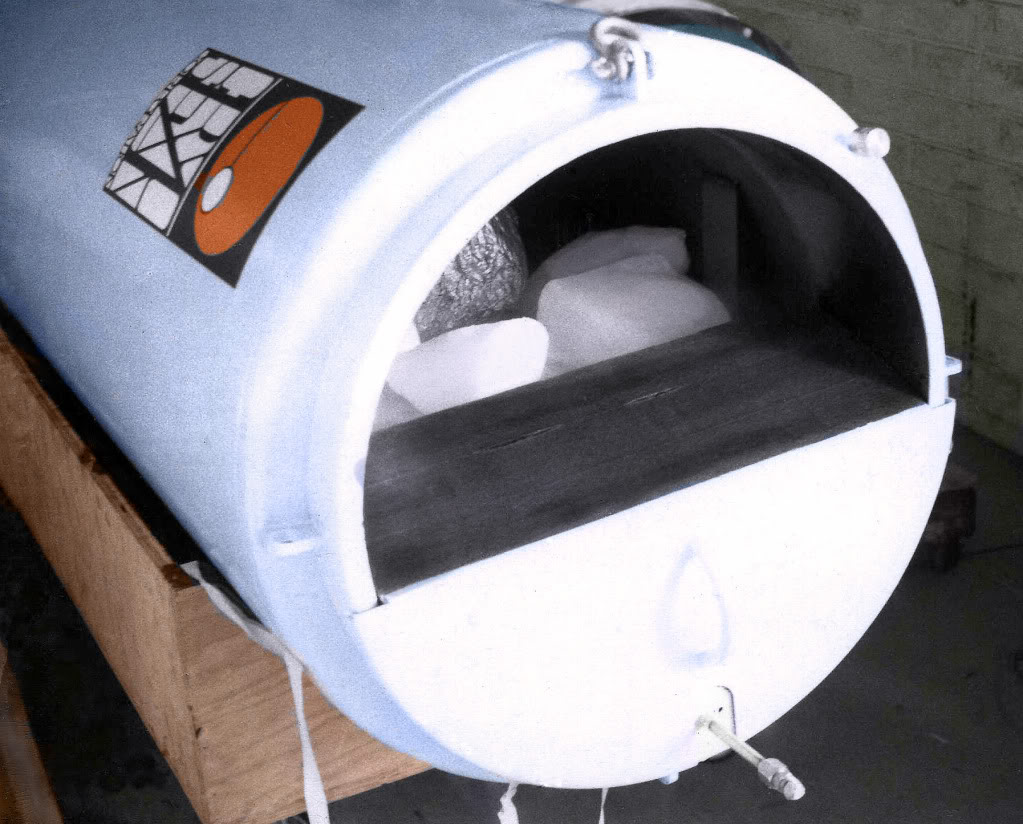 Ann Deblasio, on dry ice inside the MVE ‘Forever Flask,’ awaiting the arrival of the priest who was to consecrate the dewar. Photo by Curtis Henderson.
Ann Deblasio, on dry ice inside the MVE ‘Forever Flask,’ awaiting the arrival of the priest who was to consecrate the dewar. Photo by Curtis Henderson.
“At that time we were just about to get going on our second cross-country trip. We had formed Cryo-Span and wanted to get to grips with Nelson. So I said to DeBlasio, you buy the tank, and we’ll go and fetch it.”
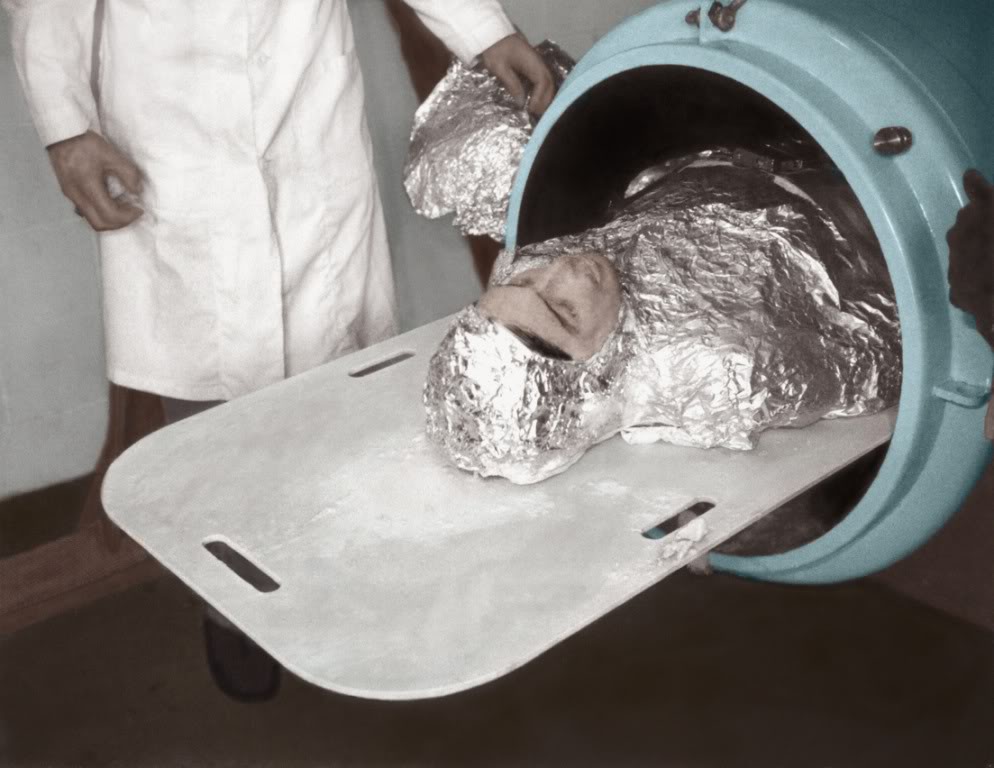 Ann Deblasio being inserted into her MVE dewar on 15 August, 1969. Photo by Curtis Henderson. A PDF of the issue of Cryonics Reports magazine detailing Ann DeBlasio’s encapsulation is available at: http://cryoeuro.eu:8080/download/attachments/425990/CryonicsReports4%289-10%291969.pdf
Ann Deblasio being inserted into her MVE dewar on 15 August, 1969. Photo by Curtis Henderson. A PDF of the issue of Cryonics Reports magazine detailing Ann DeBlasio’s encapsulation is available at: http://cryoeuro.eu:8080/download/attachments/425990/CryonicsReports4%289-10%291969.pdf
“I never made any money on the tanks. We thought the remaining money would cover everything, with some further monthly payments for liquid nitrogen. Think back now, it was a ridiculously small amount of money for what we were thinking of doing. We had to build frames and racks, there were the vacuum pumps – there was never any money.”
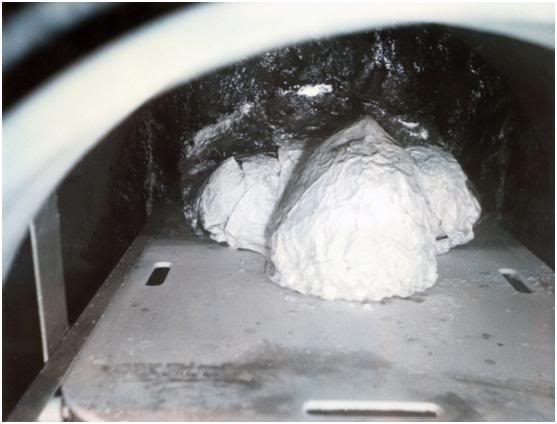 This spectacular photograph was taken by Curtis Henderson as he filled DeBlasio’s dewar with liquid nitrogen for the first time. The view is ‘downward looking’ from the open neck-tube of the unit. The liquid nitrogen level is just below the patient’s shoulders. This photo was made with a Polaroid camera and film, and is extraordinary for its clarity, as well as for its composition and perspective. Henderson was the first to master the art of taking photos under these almost impossible conditions.
This spectacular photograph was taken by Curtis Henderson as he filled DeBlasio’s dewar with liquid nitrogen for the first time. The view is ‘downward looking’ from the open neck-tube of the unit. The liquid nitrogen level is just below the patient’s shoulders. This photo was made with a Polaroid camera and film, and is extraordinary for its clarity, as well as for its composition and perspective. Henderson was the first to master the art of taking photos under these almost impossible conditions.
“I sent the $5,000 to Minnesota, where the tanks were custom built. DeBlasio’s wife was being kept on dry ice at Fred’s, in the basement, in a box. The tank took a while to build—a couple of months. Shuster did it by welding two of his standard larger tanks together. We drove out there to get it ourselves. We stopped off in Detroit, where we stayed with Ettinger, sleeping in his basement. The whole trip took about a month.”
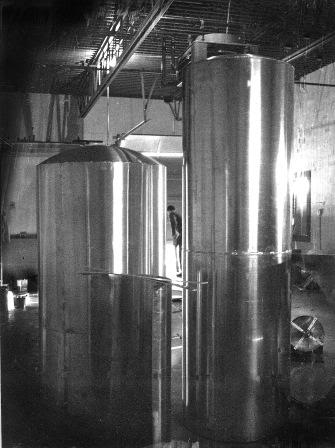
The first MVE dual patient dewar (at right in the photo above) under construction at MVE’s plant in New Prague, MN, in 1969. The unit was fabricated by ‘stretching’ the MVE A-8000, a standard biological specimen storage tank (used to store semen, tissue cultures, etc.) which had a 25″ wide neck-tube opening , so that it was tall enough to accommodate human patients. The dewar shell at the left in the photo was another custom built tank for another customer, unrelated to cryonics. MVE is currently owned by Chart Industries, and the A-8000 is still manufactured, although the product has been renamed the 800 Series. See page 18 of the Chart industries catalog at: https://www.chart-ind.com/litfiles/10934034.pdf
End of Part 5
Footnotes
[1] The embalming pump was a Turner Porti-Boy. Mandell had Chron’s disease and Curtis is very perceptive (we’ve never talked about this) in thinking Mandell should not have been operated on. The pictures of him on the embalming table show a very chacectic young man who was obviously in the final stages of malnutrition and wasting. He had had a partial colectomy and colostomy years before. When he developed another bowel fistula there were two choices – put in drains and try to improve his nutritional status, or operate. He died of “adrenal failure” as the first cause of death. This translates to death from anesthesia and surgical stress in a very, very sick patient.
[2] Fred Horn died in 2007 from osteoporosis (complications following a fall and a fractured hip). MD
[3] Edward Schuster was the principal stockholder and founder of Minnesota Valley Engineering (MVE) in New Prague, MN. MD
[4]The company Schuster acquired was Hoffmann Cryogenics, Inc. MD
